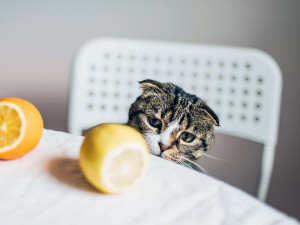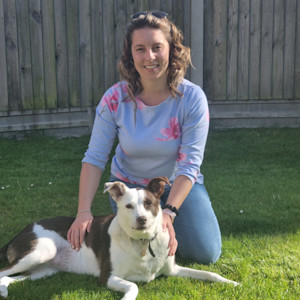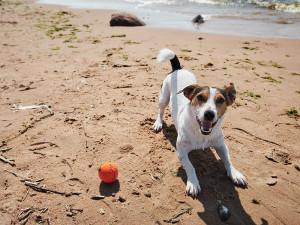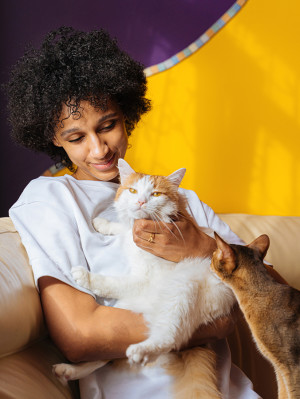How Do Dogs and Cats Think?
How can we best understand what’s going on in the minds of our cats and dogs? A neurology specialist veterinary nurse breaks it down
Have you ever looked at your dog or cat and wondered what was going through their mind? Unfortunately, it’s not quite possible to know their exact thoughts but we can get a deeper understanding of how our pets’ minds work. This involves learning about how they’re able to interpret the world around them and how this can be similar to our own perceptions but also where it may differ. As a neurology specialist veterinary nurse, here are some ways that you can gain an insight into the minds of your favourite companions and learn to communicate better with them.
Interpreting the world through smell
Firstly, cats and dogs rely heavily on their senses, which are far more attuned than humans. For example, they are able to use their sense of smellopens in a new tab to perceive the world. This is largely because the area of a dog’s brain that is used to process scent (olfactory lobe) is 40 times larger than a human’s, taking up a whopping eighth of their brain. Fascinatingly, dogs don’t just process scent in the olfactory part of their brain but also in both the more primitive limbic system (which deals with emotions, memory and behaviour), and the cortex of the brain (which deals with conscious thoughts and taste). And because that scent information is sent to both the primitive and conscious areas of the brain, this information affects a dog’s actions in many ways and is quite possibly the most important of all their senses. Interestingly, because of their short faces and therefore brain shape, flat-faced breedsopens in a new tab such as French Bulldogs, do not have as good a sense of smell compared to other breeds.
littleKin™ is Kinship’s home just for puppy and kitten parents. Bop over to check out expert advice, new pet tools, and special deals—all curated for your newest family member.
opens in a new tabScent is also an important part of communication. An individual cat or dog will emit a personal olfactory profile that imparts a wealth of information to others including their age, sex, mood, health status, diet, size of pack and rank within the pack. Unfortunately, as humans we miss this information, so we have to rely on behavioural cues instead.
This gap in communication can be confusing for our pets as during mutual sniffing, information will be exchanged in the form of adrenalin and pheromones, which enables differentiation between friend or foe. Humans may exude large amounts of adrenaline if we are scared or angry and, unfortunately, our pets will not be able to rationalise or differentiate this, so will only be able to identify that the human is gearing up for a fight or flight response. Something to bear in mind when we get home from a stressful day in the office!
How do dogs and cats think about food?
Unlike scent, a dog or cat’s sense of taste is much less sophisticated than us humans. We have 9,000 taste buds; dogs have 1,700, and cats only 473. Although, dogs and cats do have an ability to sense the taste of water. Dogs can differentiate between meat-based and non-meat-based foods without smell. However, they cannot differentiate between different meats like chicken, lamb or pork without smell, whereas a human can taste the difference. This is most likely why dogs are drawn to stinky food items such wet food or raw food over dry kibble. Dogs can taste sweet, sour, bitter and salty like we can, however, cats can only detect salty and bitter flavours but not sweet. This is because cats are obligate carnivores, so do not need to eat fruit and vegetables in order to survive. It is because cats have so few taste buds, that smell is even more important to their appetite.
How do dogs and cats think while playing?
As humans, our complex cerebral cortex allows for organised imaginative play, often involving rules and objectives. However, dogs and cats have a less developed cerebral cortex, which has more of an emphasis on sensory processing, emotion and instinctual behaviours. This means that cats tend to enjoy predatory games and solitary play that mimics hunting, and dogs, being more social, engage in more interactive play with others. Despite these brain-based differences, playopens in a new tab remains a vital tool for learning and bonding across all species.
While dogs and cats do both learn and problem-solve, their methods differ. Dogs thrive on social cues and reinforcement, making them highly trainableopens in a new tab, whereas cats tend to be more independent and may need different motivational approaches. Dogs are naturally social, forming strong bonds and understanding human emotions, while cats, although capable of attachments, are more solitary and less reliant on social cues. Both species have good long-term memories, especially concerning spatial awareness and recognising important scents, landmarks and resources like food and water. It’s essential to remember that individual personalities and experiences play a significant role in shaping the way dogs and cats think and behave.
How do dogs and cats express emotion through body language?
Last but not least, animals show a lot of their feelings through the way they move and hold themselves. Understanding our pets’ body languageopens in a new tab and behaviour can provide insights into their emotional state. This is why observation plays a huge part in our ability to understand animals and why it’s a good idea to brush up on the common behavioural traits of your pet’s species to help you understand what they’re trying to tell you. If we are able to notice patterns in their reactions to different things, we can better communicate with them in a way that they can understand, which can be through positive reinforcement, body posture and facial expressions.
So, it seems we interpret the world around us a little differently to our pets, however we are still able to form incredibly strong bonds despite these differences. Getting to know our pets as individuals is a wonderful experience and in turn helps us understand what they’re thinking and appreciate their unique cognitive abilities and behaviours. This enables us to foster deeper connections with them and have more of an idea about what is going on in their beautiful minds.










